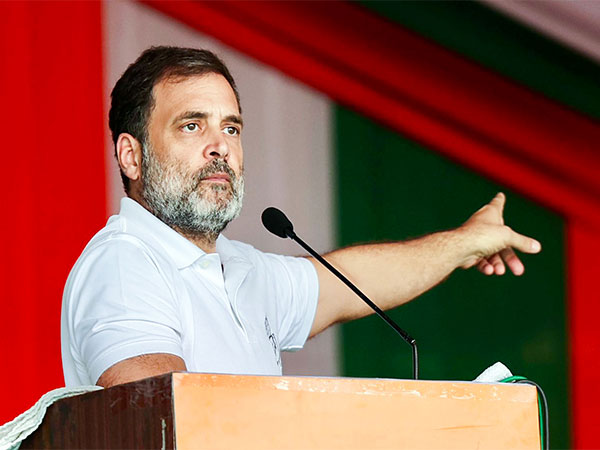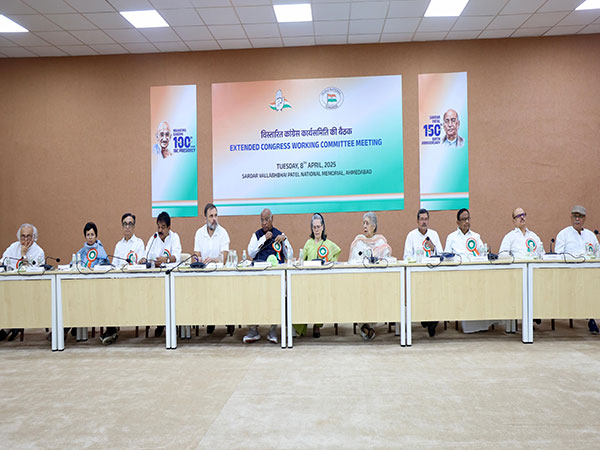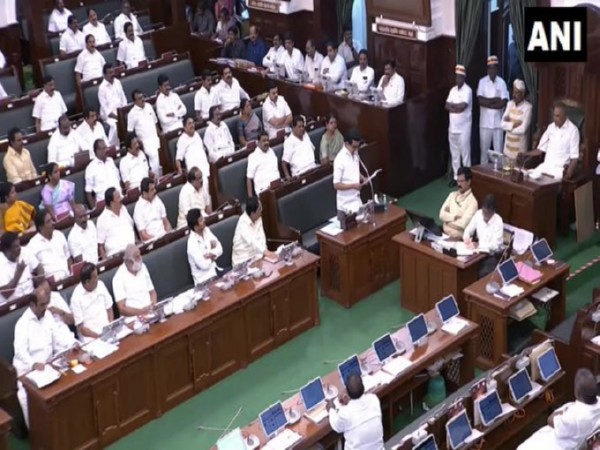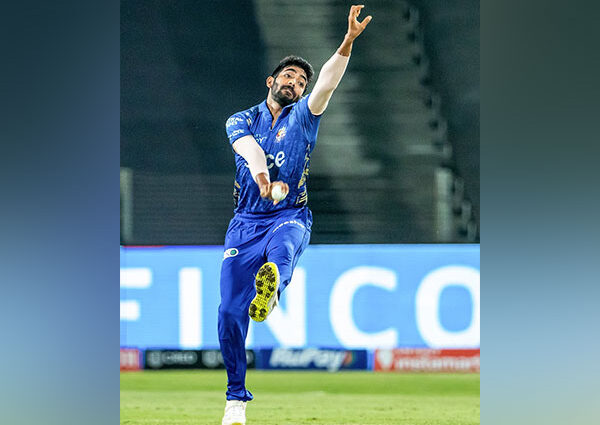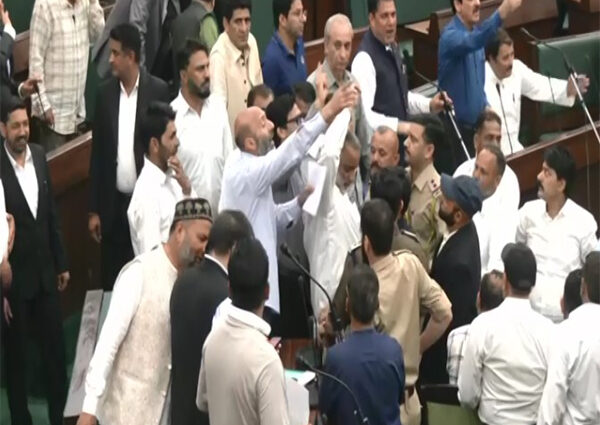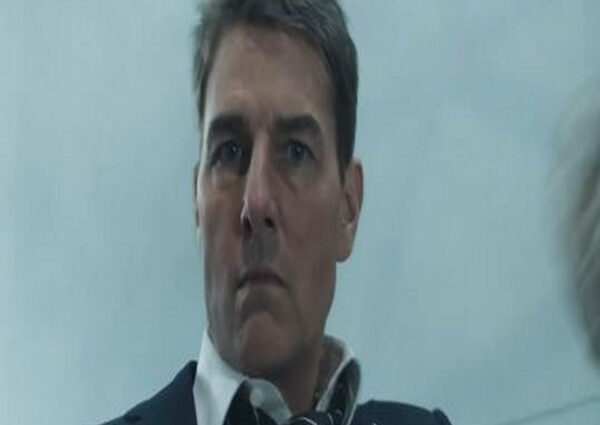As the 84th AICC national convention and CWC meeting convened today in Ahmedabad, Congress President Mallikarjun Kharge, in a veiled attack on the BJP, stated that attention is being diverted from the basic issues of the country by creating “communal division.”
At the opening ceremony of the AICC convention, Kharge said, “Today, attention is being diverted from the basic issues of the country by doing Communal Division. On the other hand, Oligarchic Monopoly is on the path of controlling the governance by capturing the resources of the country.”
The Congress President further said that a “conspiracy” is being carried out in the nation regarding several national heroes, including that of bilateral ties between former Prime Minister Jawaharlal Nehru and Sardar Vallabhai Patel.
Kharge said, “Friends, for the last many years, a well-planned conspiracy has been carried out regarding many national heroes. An atmosphere is being created against the Congress party, which has a glorious history of serving and fighting for the country for 140 years. This work is being done by those people who have nothing to show as their achievements. They have nothing to show as their contribution in the freedom struggle.”
Taking on the BJP, the Congress President stated that they are conspiring to show that Nehru and Patel were against each other, but to contrast, both leaders shared a good relationship.
He said, “They conspire to show the relationship between Sardar Patel and Pandit Nehru as if both the heroes were against each other. Whereas the truth is that they were two sides of the same coin. Many incidents and documents are witness to their cordial relationship. I would especially like to mention a speech by Sardar Patel at the Gujarat Vidyapeeth in 1937. At that time, Nehruji was the President of the Congress, and the youth of Gujarat wanted Nehruji to be called to campaign in the provincial elections.”
“Sardar Patel said on 7 March 1937 that “The day Gujarat proves its loyalty to the Congress by becoming victorious in this election movement, we will welcome Congress President Nehruji with flowers and welcome him with open hearts.” You can understand how much Sardar Patel loved Nehruji from this. On 14 October 1949, Sardar Patel had said in his felicitation book for Nehruji that “No one knows better than me the tireless efforts Nehruji has made for the country in the last two difficult years. During this time, I have seen him grow old very fast due to the burden of heavy responsibilities. These things are recorded in the public record. There was correspondence between the two almost every day. Nehruji used to take his advice on all matters,” Kharge stated.
Highlighting their relationship, Kharge said, “Nehruji had immense respect for Patel sahab. If he had to take some advice, he himself would go to Patelji’s house. For Patelji’s convenience, CWC meetings were held at his residence.”
Targeting Rashtriya Swayamsevak Sangh (RSS), The Congress leader stated that Patel was against RSS and even banned that organisation.
He said, “Sardar Patel’s ideology was contrary to the ideas of RSS. He had even banned RSS. But it is laughable that today the people of that organization claim Sardar Patel’s legacy. Gandhiji and Sardar Patel played an important role in making Baba Saheb Dr. Ambedkar a member of the Constituent Assembly.”
Speaking on the AICC convention which is being convened in Gujarat, Kharge stated that three great personalities born on the land of Gujarat made the name of Congress famous all over the world.
The Congress President said, “This year is the centenary of Mahatma Gandhi becoming the Congress President. In December 1924, the Father of the Nation, Mahatma Gandhi became the President in the Belagavi Congress session of my home state Karnataka. We celebrated this centenary in Karnataka on 26 December. Friends, three great personalities born on the land of Gujarat made the name of Congress famous all over the world. Dadabhai Naoroji, Mahatma Gandhi and Sardar Vallabhbhai Patel – all of them were the Presidents of our Congress Party.”
He added, “Gandhiji gave us the weapon of truth and non-violence against injustice. This is such a strong ideological weapon that no power can stand before it. Just as Champaran Satyagraha was successful under the leadership of Gandhiji and it helped in establishing the roots of Congress in every village, similarly Bardoli Satyagraha and other farmer movements led by Sardar Patel in Gujarat are immortal in history.”
Kharge further stated that Congress will celebrate the 150th birth anniversary of Sardar Vallabhai Ptale with great enthusiasm.
He said, “This year on 31st October is the 150th birth anniversary of Sardar Patelji. Nehruji used to call him “founder of unity of India”. We will celebrate his 150th birth anniversary with great enthusiasm across the country. Sardar Saheb was the President of Congress. The resolutions on fundamental rights passed in Karachi Congress under his leadership are the soul of Indian Constitution. Sardar Patel was the President of the important ‘Advisory Committee on Fundamental Rights, Minorities and Tribal and excluded areas’ of the Constituent Assembly.”
Kharge went on say, “Dr. Ambedkar himself said in his last speech in the Constituent Assembly on 25 November 1949 that “The Constitution could not have been made without the cooperation of the Congress Party.”
Attacking RSS, the Congress president said, “But when the Constitution was made, the RSS criticized Gandhiji, Pandit Nehru, Dr. Ambedkar and the Congress a lot. The Constitution and the effigies of these leaders were burnt at Ramlila Maidan. It was also said that the Constitution was not inspired by Manuwadi ideals.”
Criticising the Prime Minister Narendra Modi-led Centre, the Congress leader alleged that they have “insulted” Mahatma Gandhi and BR Ambedkar by lifting their statue in the Parliament premises.
He said, “The Modi government insulted Gandhiji and Baba Saheb by lifting their grand statue in the Parliament premises and putting it in a corner.”
Launching a fierce critique on Home Minister Amit Shah, Kharge said, “The Home Minister made fun of Baba Saheb in the Rajya Sabha by saying that you people say Ambedkar, Ambedkar, Ambedkar, if you took the name of God so much, you would have got heaven for 7 births. Congress party respects both the constitution and its makers and knows how to protect it. Sardar Patel sahab lives in our hearts and thoughts. We are taking his legacy forward. We have organized this CWC meeting in Ahmedabad at Sardar Patel Museum with this thought in mind. We pay our heartfelt tribute to him.”
Sharpeining his attacks on BJP and RSS, Kharge said, “Today, BJP and Sangh Parivar people are taking over the institutions associated with Gandhiji and handing them over to his ideological opponents. They have also taken over Sarva Seva Sangh in Varanasi. You all know what happened in Gujarat Vidyapeeth. Gandhian people and people of cooperative movement are being marginalized.”
The Congress President stated that Gujarat is the state from where Congress received its strength in the last 140 years.
He said, “People with such thinking can steal Gandhiji’s glasses and stick. But they can never follow his ideals. Gandhiji’s ideological legacy is the real capital which only Congress party has. Gujarat is the state from which Congress has received maximum strength in its 140 years of history. Today we have come here again to seek inspiration and strength.” (ANI)


